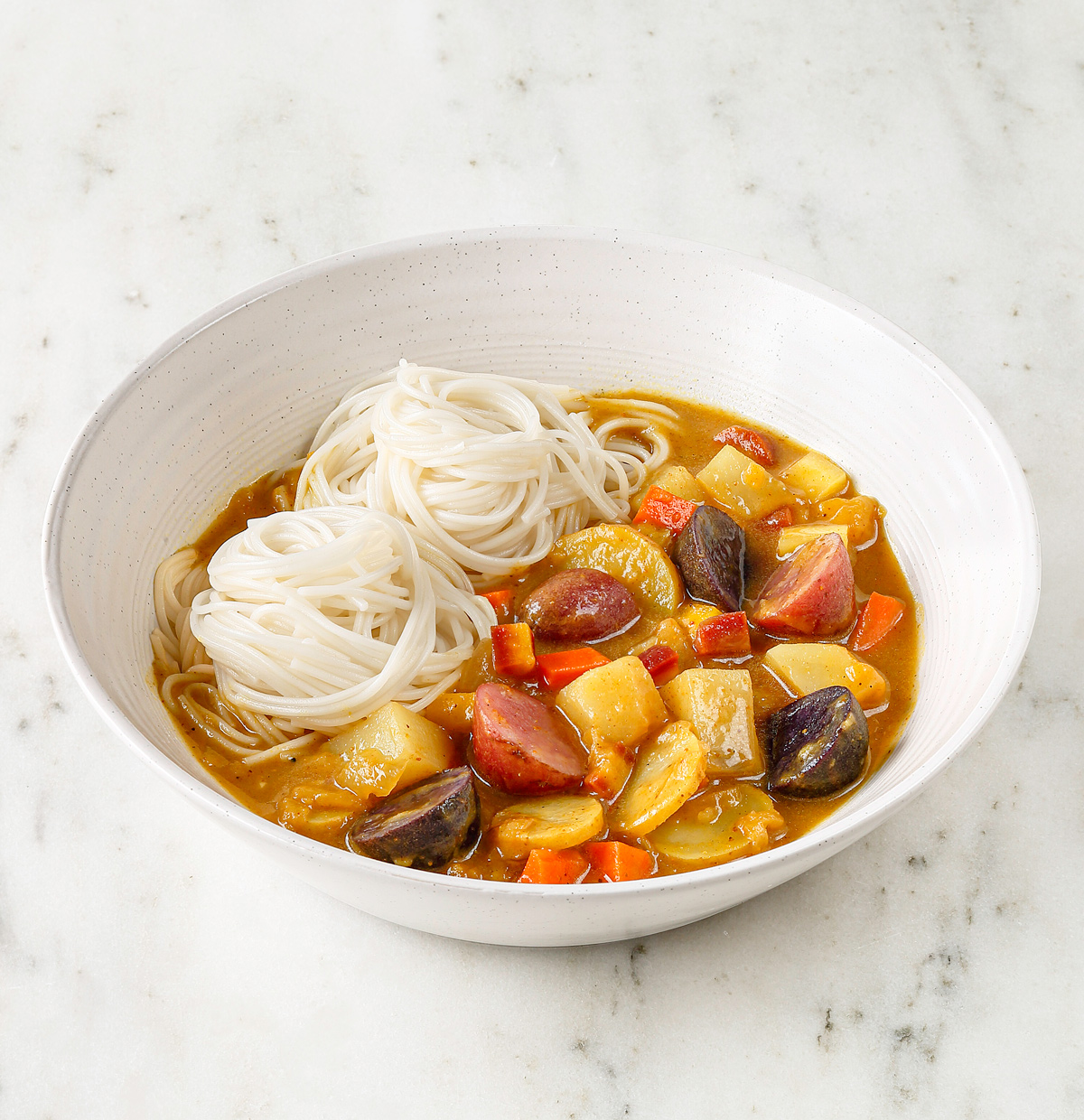
Versatile Curries Open Students to Indian Cuisine
01 November 2021Learning to layer flavors and textures introduces students to the complexity of Indian cuisine.
By Lisa Parrish, GMC Editor

In Indian cuisine, curries are like the canvas upon which different regions and states paint their local, exotic spices with masala brushes of flavor and fire. Usually, it would be difficult to pinpoint a few recipes to illustrate a country’s multicultural heritage, especially in India with more than 1 billion people. However, this one multifaceted dish - made from the north to the south and east to west - is the backdrop to display the various regions’ charms and local customizations.
Curry is a gravy or stew, according to Adam Moore, founder and chef of Flashpoint Innovation. Curries are also a great entry point for culinary students just learning to cook Indian cuisine. They can begin their understanding of Indian spices and how to build flavors and textures traditionally found in the states and territories of the vast country. The long braising time allows students to understand how inexpensive cuts of meat will give way and soften with time and how to select vegetables and other ingredients that will hold up when simmered.
Spices and aromatics
Curries start with intense aromatics and spices. Chef Moore suggests introducing students to Indian spice combinations such as cumin, coriander, cardamom, cinnamon, cloves, mustard seed, turmeric and nutmeg. Most of these spices are widely found in culinary classrooms and kitchens. He suggested creating spice blends that help students understand how to build complexity and layer flavors in Indian cuisine.
Adding heat with peppers also comes during the first few steps. Chef instructors can regionalize the Indian curry by choosing peppers such as Kashmiri peppers from the north of the country that will add color and flavor while not being overly spicey. Another option is the fiery Guntur chili grown in the southern Andhra Pradesh state. And, of course, one of the world’s hottest peppers, the Bhut Jolokia or ghost pepper, is grown in northeast India and registers 1 million Scoville Heat Units. (By comparison, the Bhut Jolokia is 208 times hotter than the average jalapeno pepper.)
Blooming the spices in oil or ghee brings out the aromatics and intensifies flavors.
Low and slow
Selecting the curry base depends on which region the culinary instructor has decided to focus on. For example, using a tomato-based sauce is typical of northern India where produce and vegetables are grown in abundance. If an educator chooses coconut milk, that base is traditionally found in southern Indian curries in locations that are closer to the Indian Ocean and in a warm climate. Whatever the base, the cooking method is the same, low and slow, said Chef Moore.
“It’s important to select hearty vegetables and meat cuts that will hold up over the cooking time,” Chef Moore said. Inexpensive cuts such as lamb shanks are commonly used in Indian cooking as they break down and become fork-tender over time. Or, more delicate proteins like fish can be added at the end of the cooking time. When deciding on the accompanying ingredients for a curry, Chef More said, “I suggest using heartier vegetables like potatoes and lentils. They also tend to be more economical.”
Moore often includes potatoes in his Indian curries as the taste and texture are a good match to the dish. “The potato helps form a well-rounded backdrop for the very strong flavors,” he commented.
Potatoes with their neutral flavors act like a sponge and soak up the more intense flavors of the spice combinations. They also enhance the braising liquid as a form of thickening agent over time. Finally, the texture of a braised potato adds creaminess to the mouthfeel of the simmered dish.
Condiments and sides
Learning to make appropriate condiments and sides helps up-and-coming chefs learn to balance Indian flavors. For example, chutneys are a relish-like condiment served with curries. They are made from fruits, vegetables, herbs and spices and are usually either sweet or spicey. A fruity chutney would pair well with a hot curry. Also, zesty lime pickles or spicy brinjal (eggplant) pickles make a great addition to an Indian meal.
Raita is another condiment served with Indian meals. It is made of yogurt, cucumber, garlic and toasted spices and used to tame the fiery flavor elements of curries and other dishes.
Finally, Indian flatbreads such as naan, chapati, paratha or roti are often served with curry. Chef Moore suggests fritters as another bread option to round out the meal. “Fritters add a crispy texture as a counterpoint to the mouthfeel of a curry,” he said. Fritters like pakora can be made with mashed potatoes and various spices rolled into the dough and then deep fried. “The mashed potatoes help retain moisture so the interior is tender and moist with a crispy exterior,” he explained.
Photos courtesy of Idaho Potato Commission, Chef Jeffery Quasha and Asha Gomez
